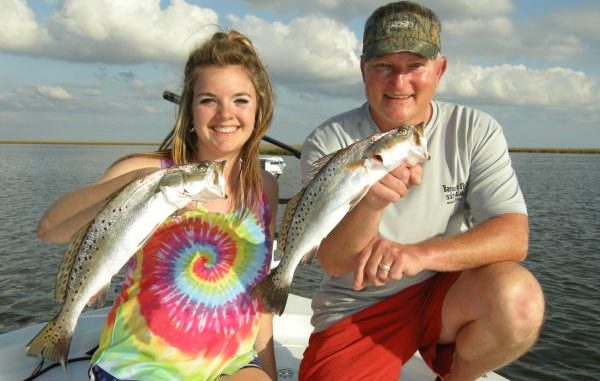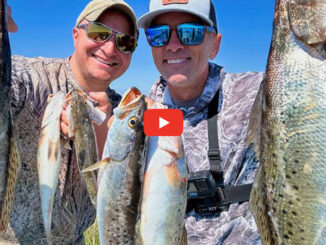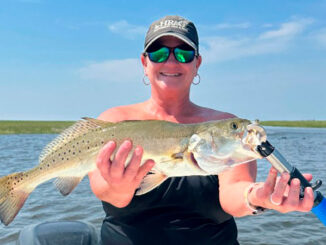
Fish with cocahoe minnows under a cork to catch nice trout in Catfish Lake
A question that any angler asks himself when he’s got a variety of live and artificial baits at his disposal is, “What should I use?”
The answer lies in timing. Some basic guidelines should be realized, however, if you’re going to hit the water around Catfish Lake in search of speckled trout this spring.
Capt. Vernon Ledoux with Bayou Boyz Fishin has been fishing areas from Catfish Lake to Grand Isle for 12 years and has noticed a few important patterns.
According to Ledoux, the cocahoe minnow hatch begins in late March, and the little baitfish take center stage as a main food source for speckled trout through the later part of April. In late April and early May, shrimp begin to thrive once more in the coastal waters of South Louisiana, taking the cocahoe’s place as a speckled trout’s favorite meal.
“We call it matching the hatch,” Ledoux said as he dumped 50 live cocahoe minnows into his livewell, preparing to try for an afternoon bite. “You have to match the bait, whatever is in season. Right now it’s cocahoes; later on it will be shrimp.”
Ledoux launched his brand new Sea Hunt BX 24 BR and made his way to the northern bank of Catfish Lake. After arriving at the mouth of one of the multiple bayous along the lake’s northern bank, Ledoux’s stepdaughter rigged a live cocahoe under a cork, made a cast and almost immediately hooked up with a speck.
“There are good oyster reefs and bayous all over this bank, and the fish are in the lake, which is a good sign,” Ledoux said.
After catching a few more trout, the bite slowed, and Ledoux switched to a Matrix Shad Lemon Drop on a ¼-ounce Rockport Rattler jighead.
“By late April and May, it will be on fire in here, and I will be able to use plastics all of the time,” Ledoux said. “I will also use topwater lures from now through the summer during the two hours after sunrise and before sunset. I love fishing topwater; some people try to set the hook when they see the splash, but that’s usually just the trout whipping it with its tail. You want to feel that pull before you set the hook.”
When thinking about artificial lures, the clarity of the water, the live bait living where you’re fishing and the weather are all variables to take into consideration.
“If the water is clear and you have a clear day, you want to go with a clear or white lure,” Ledoux said. “You also want to use a lure that resembles the kind of bait in the water at the time.”
After a few more casts, the bite seemed to wane and Ledoux made a move to an area that locals call “Big Grey Duck”, otherwise known as Bay Courant.
While powering through a passage between Little Grey Duck and Big Grey Duck, he pointed out rows of PVC pipes on either side of his boat.
“You have to be careful in here; always stay between the poles,” Ledoux said. “It can get dangerous on either side because of some shallow oyster reefs.”
As Ledoux idled through Bay Courant, ripping tidelines bustled with mullet and minnows near the bank and his in-dash fish finder showed a drop from four to 18 feet deep.
“There’s a ledge near the bank here. Any change in depth, even if it is small, will usually have fish around it,” said Ledoux, who anchored down and watched his party catch fish from 14 to 21 inches on cocahoes rigged under cork.
“There really aren’t many school trout here right now so there isn’t much competition,” Ledoux said.
In late April into May, the bite will be on and fish will be stacked up all the way from Catfish Lake to Barataria Bay.


